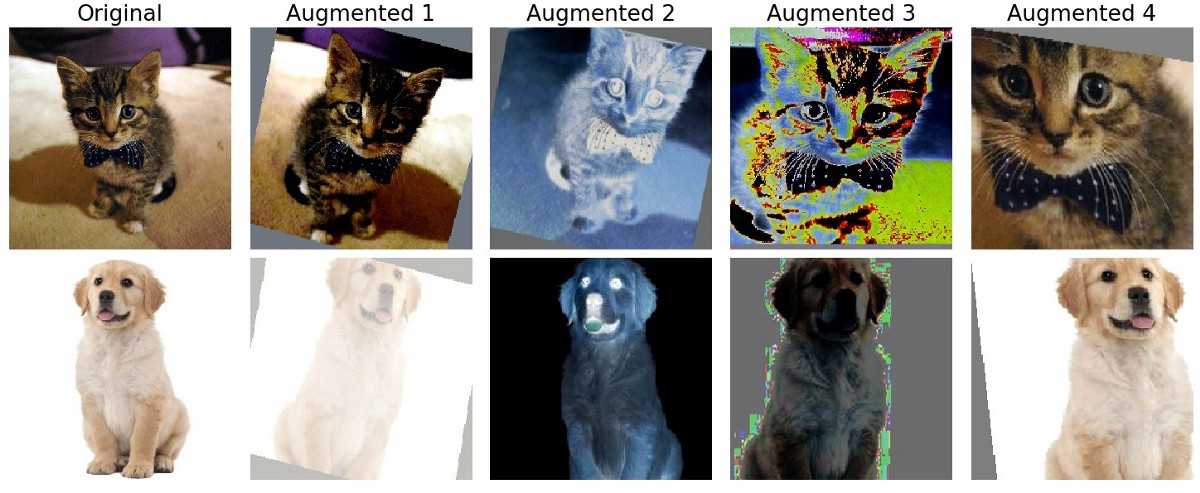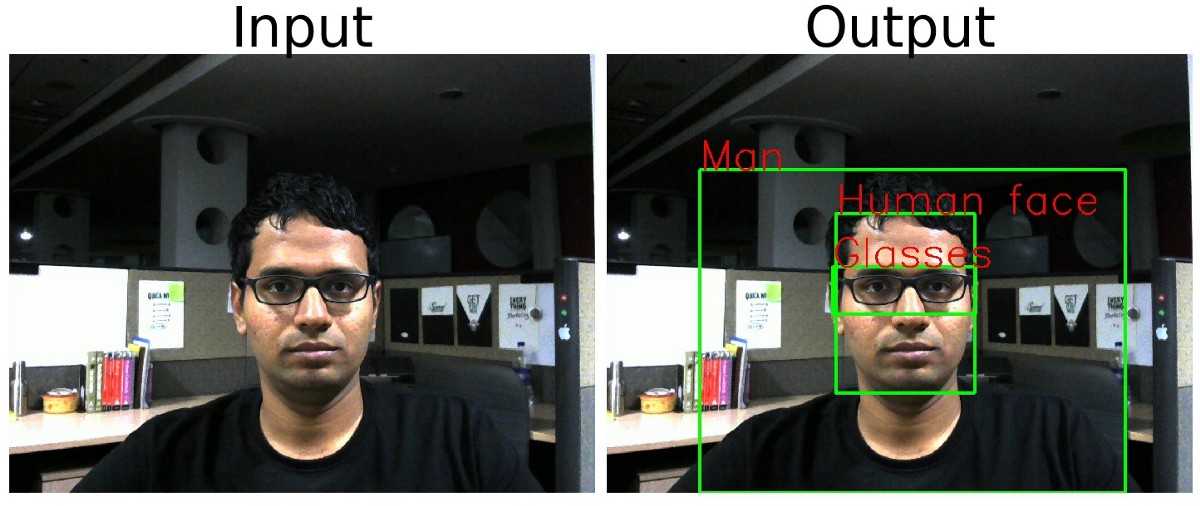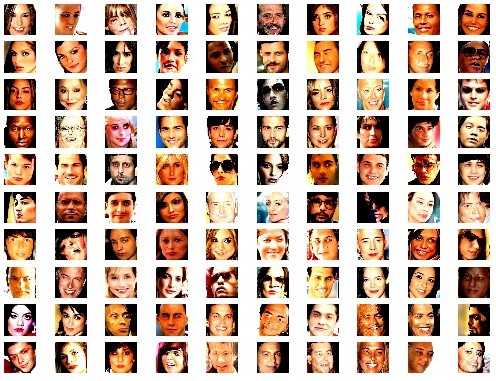标签:设置 examples style softmax 结果 from 必须 种类型 rom
任何深度学习框架,为了获得成功,必须提供一系列最先进的模型,以及在流行和广泛接受的数据集上训练的权重,即与训练模型。
TensorFlow现在已经提出了一个更好的框架,称为TensorFlow Hub,它非常易于使用且组织良好。使用TensorFlow Hub,您可以通过几行代码导入大型和流行的模型,自信地执行广泛使用的传输学习活动。TensorFlow Hub非常灵活,可以托管您的模型以供其他用户使用。TensorFlow Hub中的这些模型称为模块。在本文中,让我们看看如何使用TensorFlow Hub模块的基础知识,它是各种类型和代码示例。
接下来,让我们看一些可用于了解TensorFlow Hub模块更多细节的重要方面和功能。
1)模块实例化:由TensorFlow Hub网站托管用于不同目的(图像分类,文本嵌入等)的不同模型(Inception,ResNet,ElMo等)组成的各种模块。用户必须浏览模块目录,然后在完成其目的和模型后,需要复制托管模型的URL。然后,用户可以像这样实例化他的模块:
import tensorflow_hub as hub module = hub.Module(<<Module URL as string>>, trainable=True)
除了URL参数,另一个最值得注意的参数是‘trainable‘。如果用户希望微调/修改模型的权重,则必须将此参数设置为True 。
2)签名:模块的签名指定了每个模块的作用。如果未明确提及签名,则所有模块都带有“默认”签名并使用它。对于大多数模块,当使用“默认”签名时,模型的内部层将从用户中抽象出来。用于列出模块的所有签名名称的函数是get_signature_names()。
import tensorflow_hub as hub module = hub.Module(‘https://tfhub.dev/google/imagenet/inception_v3/classification/1‘) print(module.get_signature_names()) # [‘default‘, ‘image_classification‘, ‘image_feature_vector‘]
import tensorflow_hub as hub module = hub.Module(‘https://tfhub.dev/google/imagenet/inception_v3/classification/1‘) print(module.get_input_info_dict()) # When no signature is given, considers it as ‘default‘ # {‘images‘: <hub.ParsedTensorInfo shape=(?, 299, 299, 3) dtype=float32 is_sparse=False>} print(module.get_input_info_dict(signature=‘image_feature_vector‘)) # {‘images‘: <hub.ParsedTensorInfo shape=(?, 299, 299, 3) dtype=float32 is_sparse=False>}
4)预期输出:为了在构建TensorFlow Hub模型之后构建图的剩余部分,有必要知道预期的输出类型。get_output_info_dict()函数用于此目的。请注意,对于“默认”签名,通常只有一个输出,但是当您使用非默认签名时,图表的多个图层将向您公开。
import tensorflow_hub as hub module = hub.Module(‘https://tfhub.dev/google/imagenet/inception_v3/classification/1‘) print(module.get_output_info_dict()) # When no signature is given, considers it as ‘default‘ # {‘default‘: <hub.ParsedTensorInfo shape=(?, 1001) dtype=float32 is_sparse=False>} print(module.get_output_info_dict(signature=‘image_classification‘)) # {‘InceptionV3/global_pool‘: <hub.ParsedTensorInfo shape=(?, 1, 1, 2048) dtype=float32 is_sparse=False>, # ‘InceptionV3/Logits‘: <hub.ParsedTensorInfo shape=(?, 1001) dtype=float32 is_sparse=False>, # ‘InceptionV3/Conv2d_2b_3x3‘: <hub.ParsedTensorInfo shape=(?, 147, 147, 64) dtype=float32 is_sparse=False> # ..... Several other exposed layers...... }
5)收集所需的模块层:实例化模块后,必须从模块中提取所需的层/输出并将其添加到图形中。以下是一些方法:
import tensorflow as tf import tensorflow_hub as hub images = tf.placeholder(tf.float32, (None, 299, 299, 3)) module = hub.Module(‘https://tfhub.dev/google/imagenet/inception_v3/classification/1‘) logits1 = module(dict(images=images)) # implies default signature print(logits1) # Tensor("module_apply_default/InceptionV3/Logits/SpatialSqueeze:0", shape=(?, 1001), dtype=float32) module_features = module(dict(images=images), signature=‘image_classification‘, as_dict=True) # module_features stores all layers in key-value pairs logits2 = module_features[‘InceptionV3/Logits‘] print(logits2) # Tensor("module_apply_image_classification/InceptionV3/Logits/SpatialSqueeze:0", shape=(?, 1001), dtype=float32) global_pool = module_features[‘InceptionV3/global_pool‘] print(global_pool) # Tensor("module_apply_image_classification/InceptionV3/Logits/GlobalPool:0", shape=(?, 1, 1, 2048), dtype=float32)
import tensorflow as tf with tf.Session() as sess: sess.run([tf.tables_initializer(), <<other initializers>>])
一旦构建了包含模块,学习算法优化器,目标函数,自定义层等的完整图形,这就是代码的图形部分的框架。
1 import tensorflow as tf 2 import tensorflow_hub as hub 3 4 << Create Placeholders >> 5 << Create Dataset and Iterators >> 6 7 module1 = hub.Module(<< Module URL >>) 8 logits1 = module1(<< input_dict >>) 9 10 module2 = hub.Module(<< Module URL >>) 11 module2_features = module2(<< input_dict >>, signature=‘default‘, as_dict=True) 12 logits2 = module2_features[‘default‘] 13 14 << Remaining graph, learning algorithms, objective function, etc >> 15 16 with tf.Session() as sess: 17 sess.run([tf.tables_initializer(), << other initializers >>]) 18 19 << Remaining training pipeline >>
我正在使用两个模块。第一个模块使用最小的代码构建,隐式使用默认签名和层。在第二个模块中,我明确指定了默认签名和图层。以类似的方式,我们可以指定非默认签名和图层。
顾名思义,这些模块集用于图像分类。在这类模块中,给出了完整的网络架构。这包括用于分类的最终密集连接层。在这个类别的代码示例中,我将使用Inception V3模块将Kaggle的猫狗分类问题分类为1001个ImageNet类。
import tensorflow as tf import tensorflow_hub as hub from Dataset import Dataset tf.reset_default_graph() dataset = Dataset() module = hub.Module(‘https://tfhub.dev/google/imagenet/inception_v3/classification/1‘) logits = module(dict(images=dataset.img_data)) softmax = tf.nn.softmax(logits) top_predictions = tf.nn.top_k(softmax, top_k, name=‘top_predictions‘)
这是为某些样本生成的输出预测集。

(在猫和狗中产生的分类)
这与图像分类模块非常相似,唯一的区别是模块不包括最终的密集分类层。在这个类别的代码示例中,我将针对Hackerearth的多标签动物属性分类问题微调Resnet-50模块。 在微调操作期间,除了定制附加的密集层之外,通常还需要优化模块的最终层。在这种情况下,您必须找到要微调的范围或变量的名称。我附加了代码的相关部分以在特征向量模块中执行此类过程。
1 module = hub.Module(‘https://tfhub.dev/google/imagenet/resnet_v2_50/feature_vector/1‘, 2 trainable=True) # Trainable is True since we are going to fine-tune the model 3 module_features = module(dict(images=dataset.image_data), signature="image_feature_vector", 4 as_dict=True) 5 features = module_features["default"] 6 7 with tf.variable_scope(‘CustomLayer‘): 8 weight = tf.get_variable(‘weights‘, initializer=tf.truncated_normal((2048, n_class))) 9 bias = tf.get_variable(‘bias‘, initializer=tf.ones((n_class))) 10 logits = tf.nn.xw_plus_b(features, weight, bias) 11 12 # Find out the names of all variables present in graph 13 print(tf.all_variables()) 14 15 # After finding the names of variables or scope, gather the variables you wish to fine-tune 16 var_list = tf.get_collection(tf.GraphKeys.GLOBAL_VARIABLES, scope=‘CustomLayer‘) 17 var_list2 = tf.get_collection(tf.GraphKeys.GLOBAL_VARIABLES, scope=‘module/resnet_v2_50/block4‘) 18 var_list.extend(var_list2) 19 20 # Pass this set of variables into your optimiser 21 optimizer = tf.train.AdamOptimizer(learning_rate=lr).minimize(loss, var_list=var_list)
如果模块图中的节点没有直观命名(非常不可能的情况),则必须弄清楚模块的体系结构,然后将它们映射到正在打印的节点。
在代码示例中,我已经调整了最后几层变量属于‘resnet_v2_50 / block4‘的变量范围。通过10个时期的训练,你可以毫不费力地获得这个问题的F1分数0.95819。
视频分类是指对视频片段中发生的活动的性质进行分类。在代码示例中,我已经在Inception 3D模块上训练了包含27个类的20BN-Jester数据集。再说一次,只有3个训练时期,我的准确率达到了91.45%。模块代码的相关部分如下所示。
import tensorflow as tf import tensorflow_hub as hub from Dataset import Dataset dataset = Dataset() module = hub.Module("https://tfhub.dev/deepmind/i3d-kinetics-400/1", trainable=True) features = module(dict(rgb_input=dataset.image_data)) n_class = 27 with tf.variable_scope(‘CustomLayer‘): weight = tf.get_variable(‘weights‘, initializer=tf.truncated_normal((400, n_class))) bias = tf.get_variable(‘bias‘, initializer=tf.ones((n_class))) logits = tf.nn.xw_plus_b(features, weight, bias)
为了测试模型的准确性,我构建了一个简单的实时视频分类应用程序,这里是一个小视频。

1 module = hub.Module(‘https://tfhub.dev/google/elmo/2‘, trainable=True) 2 embeddings = module(dict(text=dataset.text_data)) 3 embeddings = tf.expand_dims(embeddings, axis=1) 4 5 with tf.variable_scope(‘Layer1‘): 6 cell_fw1 = tf.nn.rnn_cell.LSTMCell(num_units=128, state_is_tuple=True) 7 cell_bw1 = tf.nn.rnn_cell.LSTMCell(num_units=128, state_is_tuple=True) 8 9 outputs1, states1 = tf.nn.bidirectional_dynamic_rnn( 10 cell_fw=cell_fw1, 11 cell_bw=cell_bw1, 12 inputs=embeddings) 13 14 rnn_output = tf.reshape(outputs1[0], (-1, 128)) 15 16 with tf.variable_scope(‘Layer2‘): 17 weight2 = tf.get_variable(‘weight‘, initializer=tf.truncated_normal((128, n_class))) 18 bias2 = tf.get_variable(‘bias‘, initializer=tf.ones(n_class)) 19 logits = tf.nn.xw_plus_b(rnn_output, weight2, bias2)
图像增强是流水话训练中的一个重要组成部分,可以提高模型的准确性。所有图像增强模块(在编写本文时)都没有任何变量,因此,这些模块不具有可调性/可训练性。使用‘from_decoded_images‘的签名,您可以直接将图像提供给这些模块。下面示出了示例代码块以及生成的增强图像。
1 import tensorflow as tf 2 import tensorflow_hub as hub 3 import tensorflow.contrib.image # Needed for Image Augmentation modules 4 5 from Dataset import Dataset 6 dataset = Dataset() 7 8 module = hub.Module(‘https://tfhub.dev/google/image_augmentation/nas_svhn/1‘) 9 input_dict = dict(image_size=image_size, # Output Image size 10 images=dataset.img_data, # Has the image in Numpy data format 11 augmentation=True) 12 aug_images = module(input_dict, signature=‘from_decoded_images‘)

对象检测模块不支持微调,因此如果您有自己的数据集,则必须从头开始执行培训。目前也不支持批量处理数据。在代码示例中,我将仅使用Inception-ResNet V2模块上的FasterRCNN对图像进行推断。我附上了下面模块生成的代码和图像的模块部分。
import tensorflow as tf import tensorflow_hub as hub from Dataset import Dataset dataset = Dataset() module = hub.Module(‘https://tfhub.dev/google/faster_rcnn/openimages_v4/inception_resnet_v2/1‘) detector = module(dict(images=dataset.image_data), as_dict=True) class_entities = detector[‘detection_class_entities‘] boxes = detector[‘detection_boxes‘] scores = detector[‘detection_scores‘] class_labels = detector[‘detection_class_labels‘] class_names = detector[‘detection_class_names‘]

这些对应于生成性对抗网络(GAN)。一些模块没有暴露其网络的Discriminator部分。就像对象检测一样,即使在代码示例中,我也只是在进行推理。使用在CelebA数据集上训练的Progressive GAN模块,我将生成新面孔。我附上了下面模块生成的代码和图像的模块部分 。
1 import tensorflow as tf 2 import tensorflow_hub as hub 3 4 from Dataset import Dataset 5 dataset = Dataset() 6 7 module = hub.Module("https://tfhub.dev/google/progan-128/1") 8 images = module(dataset.latent_vector_space)

(用生成器模型中的Progressie GANs生成的图片)
如果您希望看到与Dataset和Iterators集成的完整代码,并使用Saved_Model保存,您可以查看我的GitHub存储库中的代码。
对应的模型在TensorFlow Hub官网也有示例,可以在Colab上复现。例如,目标检测Colab。
原文链接:https://medium.com/ymedialabs-innovation/how-to-use-tensorflow-hub-with-code-examples-9100edec29af
标签:设置 examples style softmax 结果 from 必须 种类型 rom
原文地址:https://www.cnblogs.com/lfri/p/10713891.html